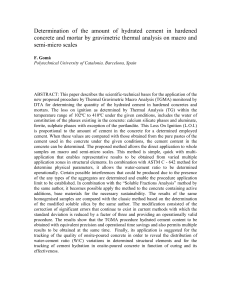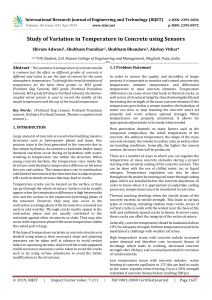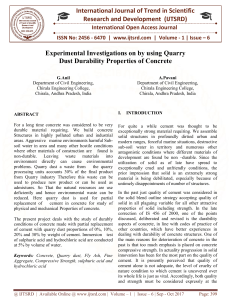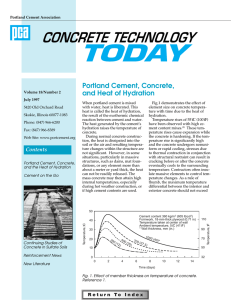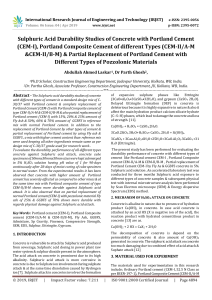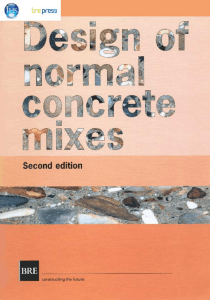Sustainability of the cement and concrete industries T.R. Naik
advertisement
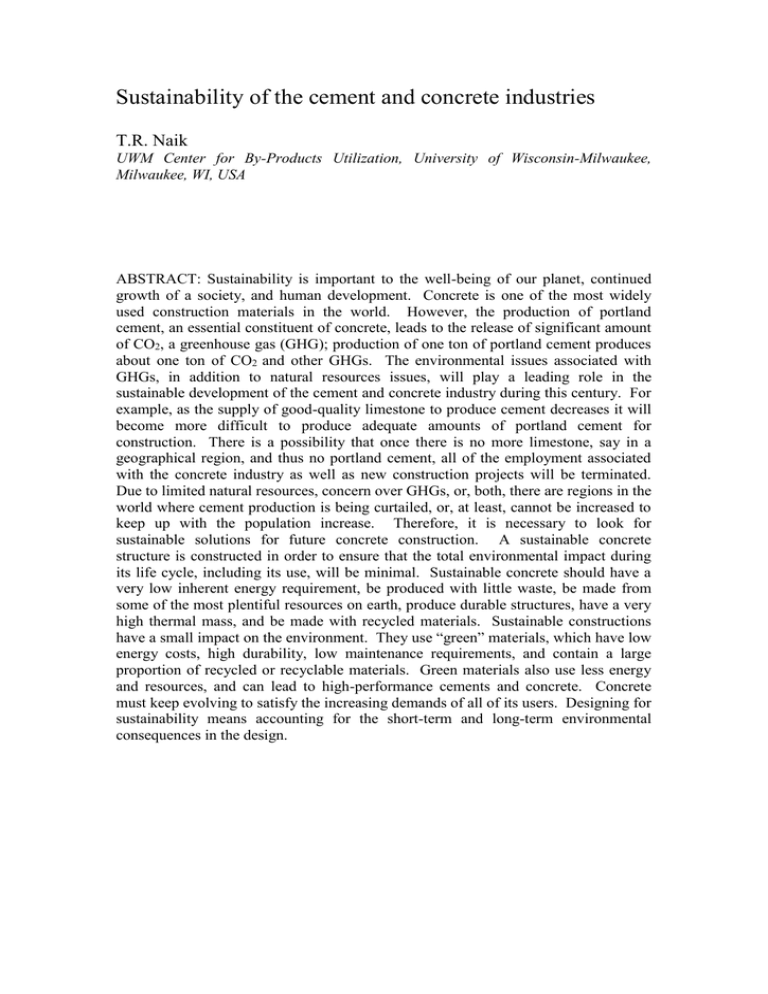
Sustainability of the cement and concrete industries T.R. Naik UWM Center for By-Products Utilization, University of Wisconsin-Milwaukee, Milwaukee, WI, USA ABSTRACT: Sustainability is important to the well-being of our planet, continued growth of a society, and human development. Concrete is one of the most widely used construction materials in the world. However, the production of portland cement, an essential constituent of concrete, leads to the release of significant amount of CO2, a greenhouse gas (GHG); production of one ton of portland cement produces about one ton of CO2 and other GHGs. The environmental issues associated with GHGs, in addition to natural resources issues, will play a leading role in the sustainable development of the cement and concrete industry during this century. For example, as the supply of good-quality limestone to produce cement decreases it will become more difficult to produce adequate amounts of portland cement for construction. There is a possibility that once there is no more limestone, say in a geographical region, and thus no portland cement, all of the employment associated with the concrete industry as well as new construction projects will be terminated. Due to limited natural resources, concern over GHGs, or, both, there are regions in the world where cement production is being curtailed, or, at least, cannot be increased to keep up with the population increase. Therefore, it is necessary to look for sustainable solutions for future concrete construction. A sustainable concrete structure is constructed in order to ensure that the total environmental impact during its life cycle, including its use, will be minimal. Sustainable concrete should have a very low inherent energy requirement, be produced with little waste, be made from some of the most plentiful resources on earth, produce durable structures, have a very high thermal mass, and be made with recycled materials. Sustainable constructions have a small impact on the environment. They use “green” materials, which have low energy costs, high durability, low maintenance requirements, and contain a large proportion of recycled or recyclable materials. Green materials also use less energy and resources, and can lead to high-performance cements and concrete. Concrete must keep evolving to satisfy the increasing demands of all of its users. Designing for sustainability means accounting for the short-term and long-term environmental consequences in the design.


